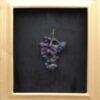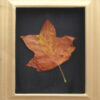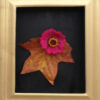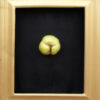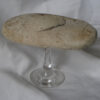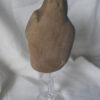They are very common and do not have any artistic goal in themselves. The method where the objects that exist outside our will (the are not manufactured by human) could be named Ready-Existent.
For practical usage of a series of such objects and to give them artistic meaning a special exposition frame was produced. This frame has exposition sides which allow to fix the objects in the vertical position when placing frame for viewing on the wall.
More interesting could be artistic presentation and perception not only ready existent objects as such but ready-existent events where these existent objects take part in dynamic relation system – an event.
Art object “Life of a Drop” presents the event of birth and death of a drop. The gist of the project lays in the projecting of primary and common event (falling of a water drop) from common conditions and place it into in certain artistic context (exposition frame). In this place appears transformation of common event into symbolic meaning, which is a short life of living beings. This is called to provoke a viewer’s feeling of value of every moment of one’s life.
Ready-existant
Project consists of:
30 works
Medium:
• Box with a frame
• Existing objects
Contemporary and avant-garde artistic movement presents idea that common manufactured object could be perceived as an exposition object, as an art object without any changes in itself and out of its functional properties (outside its routine conditions).


